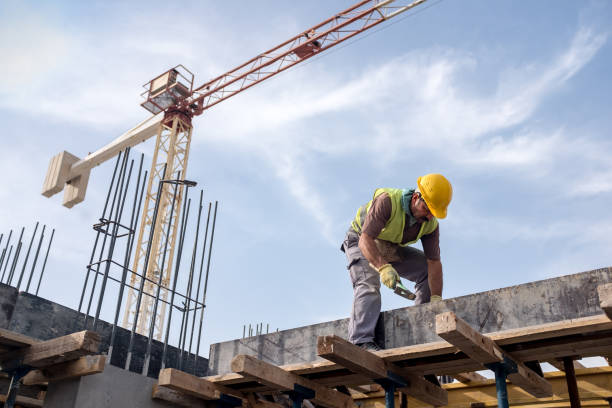Blog
Posted By: Agnes | Jun 22, 2020

COVID-19: Face Mask vs N95
Writer: Lily Ismail
As the world recently hit by the novel coronavirus known as COVID -19, a debate on whether N95 or face mask sufficient and effective in preventing the deadliest disease infection has been most discussed. As recommended recently by the Centre for Disease Control and Prevention (CDC) the general public to wear a face mask to slow the spread of the virus and help people who may have the virus and do not know it from transmitting it to others. Thus, globally we are experiencing a surge of demands, hoarding and shortage of supplies, leaving the medical care front liners at high-risk stake with depleting supply.
To tangle the confusion of choosing appropriate protection, it is crucial to distinguish the intended use of each respirator regulated by FDA, discussed below:
Face Mask
A surgical mask or known as a face mask is a loose-fitting, disposable mask made from cross stripes fabric in a weaving or knitting patterns that creates a physical barrier between the mouth and nose of the wearer and potential contaminants in the immediate environment. Bear in mind that not all face masks are regulated as surgical masks.
Surgical masks are made in different thicknesses such as 1, 2 or 3-ply with different abilities to protect from contact with droplets. For a 3-ply mask, it consists of the outer layer made from coloured non-woven material commonly blue, green, and white. The middle layer is the main filter that has undergone the melt-blown process by forcing melted polymer fibres through tiny holes and the third layer is a soft fibre lining to offer comfort to the wearer. The loose fitted design and lack of sealed may not provide maximum protection for small airborne particles transmitted such as germs and viruses from cough, sneeze, and droplets. Thus, is best suited to wear a surgical mask when the wearers having a cough or flu-like symptoms. It may help to diminish and prevent the spread of the virus from your saliva and respiratory secretions to others. The life span of the face mask in one-time use.
N95
N95 approved respirator using a web of many layers’ breathable non-woven fibrous media which is an electrostatically charged microfiber filter designed to attract oppositely charged particles from the airstream and for ease of breathing. It filters the contamination in the air and prevents it from penetrating through the filters to provide clean breathable air. Hence this is a more suitable application commonly used in healthcare settings and is a subset of N95 Filtering Facepiece Respirators (FFRs), often referred to as N95.
The N95 designation means that when subjected to the standard testing, the respirator filters a minimum 95 percent of small particle size of 0.3 microns. It is designed to form a seal between the respirator, nose, and mouth to achieve a good facial fit and filtration efficiency of non-oil based and airborne particles.
The service life of all N95-approved respirators labelled as "single-use," and is limited by considerations of hygiene, damage, and breathing resistance. All filters should be replaced whenever they are damaged, soiled, or causing noticeably increased breathing resistance.
In the hierarchy of control, Personal Protective Equipment (PPE) alone might not achieve optimal prevention of the disease, therefore, the public is encouraged to practice more effective measures for the general public to adopt such as avoid touching your face, cover your mouth and frequent hand washing, and social distancing.
Another deciding factor whether a respirator does offer sufficient protection is to understand the testing standards and methods commonly used in the markets as described below:
Bacterial Filtration Efficiency (BFE)
The Bacterial Filtration Efficiency (BFE) test is performed on the material's resistance to penetration of bacteria that are designed to protect against biological aerosols. BFE measures the filtration efficiency of a mask using viable (life) particles (bacteria) that vary in size from 1 to 5 microns. The extent to which filters remove airborne particles is referred to as filtration efficiency in percentage and correlates with the ability of the fabric to resist bacterial penetration.
Particle Filtration Efficiency (PFE)
Particle Filtration Efficiency (PFE) measures a mask filtration efficiency of submicron particles, viruses, and bacteria that are fixed in size within 0.1 microns to 1 micron using sub-microscopic particles generated by high-speed handpieces, ultrasonic scalers, and lasers commonly in use. HIV and TB pathogens are approximately 0.1 microns and 1.0 micron, respectively. Mask efficiency increases as the percentage increases.
Knowing the micron particle size tested is the key to determining the filtration efficiency instead of considering the highest percentage.
As there are various standards and approvals come with it, it worth understanding the differences:
(CE) Mark is defined as the European Union’s (EU) mandatory conformity marking for regulating the goods sold within the European Economic Area (EEA) since 1985. The CE marking represents a manufacturer’s declaration and proves that the products conform to EU health and safety standards as well as fit for its purpose. The mark CE marks are not third-party testing or quality assurance. This is similar to what known as NIOSH approved respirators as either N95, N99 or N100 according to its efficiency rating.
CE grade and European Standard EN 149 defines the following classes of “filtering facepieces”:
- FFP1 filters at least 80% of particles.
- FFP2 filters at least 94% of particles.
- FFP3 filters at least 99% of particles.
ASTM International sets the preferred international standard specification in healthcare for best practices inclusive of testing and requirements for the performance of all surgical masks, recommends that manufacturers demonstrate mask performance in 4 areas:
- Fluid Resistance: F1862/F1862M
- Differential Pressure: F2704 (Delta P)
- Filter Efficiency: F2100
- Flammability: F2100-19
Recent Articles

Posted By: Nur Afifa Binti Sazali
Jan 10, 2024

Posted By: Nur Afifa Binti Sazali
Jan 02, 2024

Posted By: Nur Afifa Binti Sazali
Dec 08, 2023

Posted By: Nur Afifa Binti Sazali
Dec 07, 2023

Posted By: Nur Afifa Binti Sazali
Dec 01, 2023
Plot 237,
Lengkok Perindustrian Bukit Minyak 3,
Bukit Minyak Industrial Estate,
14100 Simpang Ampat, Penang, Malaysia.
Enquiries :
[email protected]
Call Us :
Tel : +604-5023 882 (8 lines)
Toll Free : 1300-22-3882
